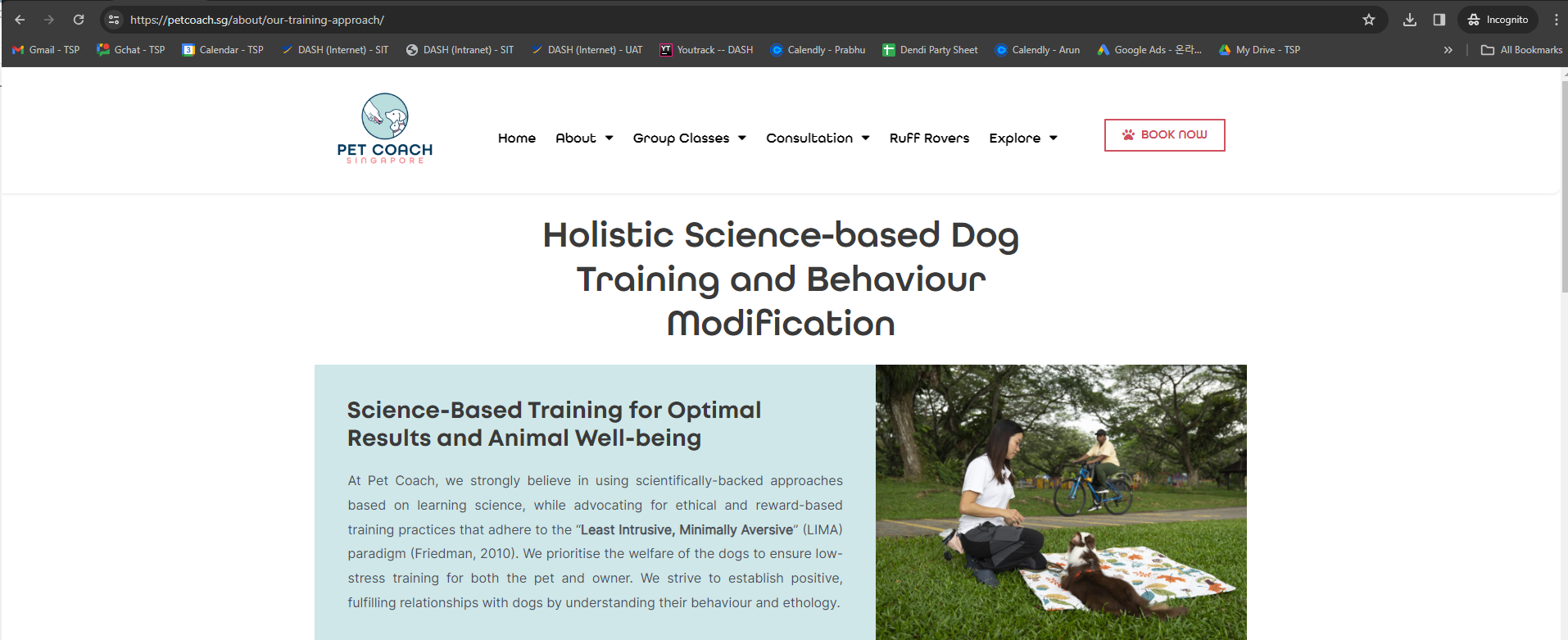Canine Chronicles
Hi all, so this section will elaborate on the new things we’ve learnt since obtaining our new boi storm. Coming from a background with no experience with dogs, getting an Australian Shepherd as a first dog is an extreme eye opener.
This Australian Shepherd is energetic, and requires constant stimulation. Due to the nature of this breed, missing his needs (e.g., stimulation, play time and enrichment etc.) would result in detrimental effect which would affect both our dog, and our household. 
Fortunately for me, my wife is a seasoned dog behaviourist with several years of experience in applying behaviour modification techniques to improve a dog’s behaviour. So I’ve had the luxury to receive constructive criticism on my handling skills in real-time, everyday from a professional.
If you guys are seeking professional assistance for your dog behaviour, look no further than Pet Coach SG!

My experience so far suggests that application of behaviour modification techniques needs to be clean, crisp and precise for the technique to be fully effective. At the time of writing, I’m still getting feedback on refinements that can be made to different aspects of my dog handling.
Hence, it’s my pleasure to document all the learnings here (even if some of these are common sense to seasoned dog owners).
Planned Articles
For this section, the articles will fall into 3 main categories:
- The theory and fundamentals section
- The practical application of dog handling, and behaviour modification techniques
- Things to take note off, when handling a dog to ensure a harmonious environment
Fundamentals of dog behaviour modification
We’ll definitely have an article on the basic concepts for dog behaviour. This refers to the concepts that can be used to encourage or dicourage specific behaviours for a dog:
- Positive reinforcement
- Negative reinforcement
- Positive punishment
- Negative punishment

Without understanding of the abovementioned concepts, it’s difficult to fully appreciate the driving factor behind the techniques that were selected.
Practical real life application of dog behaviour modification techniques
Next, with a fundamental understanding of the concepts, the technique selection and application is also difficult. In this article, techniques refers to the different actions that are performed to encourage or discourage a certain behaviour. Examples of these techniques can be: - Treat when the desired behaviour is expressed (positive reinforcement) - Remove the motivator when an undesired behaviour is expressed (negative reinforcement)
We will go into details of my personal experience, and the difficult of ensuring precision when applying these techniques. But for the introduction, it’s important to understand that the sequence and timing of the technique is crucial to ensure effectiveness. With inaccurate sequence or timing, our dog will be confused at best. In the worst case scenario, the dog would incorrectly understand and learn wrong behaviour.
:max_bytes(150000):strip_icc()/GettyImages-958882058-ea61bbe62a594754b80a23a6fe150aae.jpg)
Since I’m no dog expert, it’s difficult to explain these theory, and application in detail. So we’ll have examples of my experience and highlight the to-do’s and not-to-do’s for the rest of the articles in this section.
Things to monitor, to ensure a harmonious environment for the dog
Lastly, we’d also include articles on the different factors that you’d need to watch out for when handling a dog. Handling your own dog behaviour is sufficiently complex, but our dog does not exist in a vaccuum. Off the top of my head, these are the other factors that a handler should watch out for to ensure no conflicts arise:
- Body language of your own dog
- Body language of other humans (passer-by, some are dog-friendly but others are not)
- Body language of other dogs (when allowing your dog to interact with other dogs)
- Body language of other dog owners (different owners have different values and tolerance for dog-play)
Thank you!
That’s all for now – happy to hear from other dog owners too regarding their experience, and what they think should be a good tip on how we can better handle our dog. Afterall, the end game is to have a good experience for both the dog and dog owner, which then leads to a relaxed, fulfilling and satisfying household.
Thanks all!
Peace and Love
Shafik Walakaka